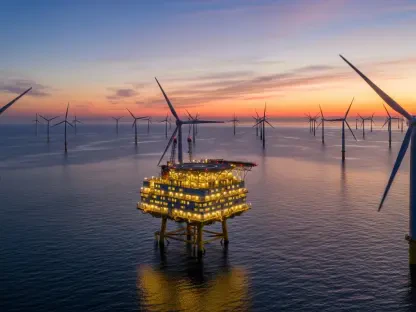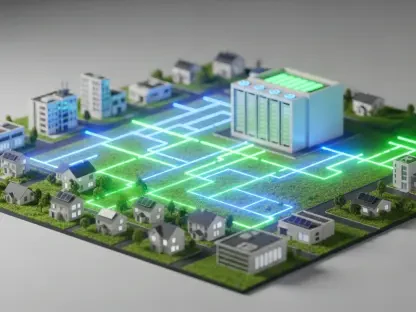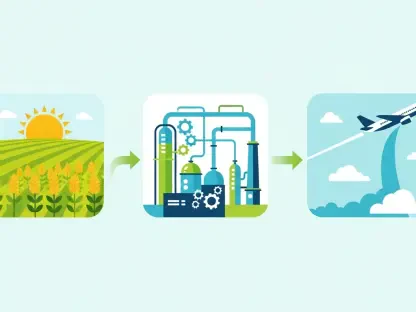Renewable energy sources, defined by the United Nations as “energy derived from natural sources that are replenished at a higher rate than they are consumed,” are at the heart of many sustainability strategies. With the potential to significantly reduce carbon emissions, renewable energy is crucial for a sustainable future. The International Energy Agency (IEA) predicts a surge in renewable energy capacity over the next five years, surpassing the capacity added since the first commercial renewable energy power plant was built more than a century ago. This prediction highlights the increasing global commitment to transitioning away from fossil fuels in favor of cleaner energy sources.
The Rapid Growth of Renewable Energy
The IEA forecasts nearly 3,700GW of new renewable capacity from 2023 to 2028. This substantial growth is driven by several significant milestones. In 2024, wind and solar photovoltaic (PV) sources are expected to collectively generate more electricity than hydropower, marking a pivotal shift in the energy landscape. By 2025, renewable energy will surpass coal as the primary source of electricity generation, solidifying its role as a dominant force in the power sector. Moreover, wind and solar PV will each surpass nuclear electricity generation in 2025 and 2026, respectively, demonstrating the increasing viability of these renewable sources.
By 2028, renewable energy sources are anticipated to account for more than 42% of global electricity generation, with wind and solar PV doubling their share to 25%. This rapid growth underscores the pivotal role of renewables in transitioning to less carbon-intensive energy systems. These advancements not only illustrate the technological progress being made but also reflect the growing political and financial support for green energy projects. As more countries and companies commit to reducing their carbon footprints, the dominance of renewable energy continues to expand.
The Role of Renewables in Decarbonization
Renewable energy sources, including solar, wind, hydropower, biofuels, and others, are essential for limiting the increase in average global temperatures to below 1.5°C. In the Net Zero Emissions by 2050 scenario, renewables are integral to achieving almost complete decarbonization of electricity generation. The deployment of renewable transport fuels and renewable heat is also crucial for significant emission reductions in the transportation sector, buildings, and industrial processes. This holistic approach ensures a wide-ranging impact across various facets of society and industry.
Despite the remarkable progress in renewable electricity generation, electricity only accounts for a fifth of global energy consumption. Enhancing the role of renewable energy in transportation and heating remains critical to the energy transition. As these sectors account for significant portions of global greenhouse gas emissions, integrating renewables into these areas is paramount for achieving comprehensive decarbonization. Sustainable development goals hinge on this multifaceted adoption and underscore the interconnected nature of energy, climate, and economic policies.
Hydrogen Fuel Cells and Green Hydrogen
Hydrogen fuel cells generate electricity through chemical reactions between hydrogen and oxygen, with water as the only byproduct. Toyota has been pioneering hydrogen fuel cell technology for over three decades, with the Mirai as its flagship vehicle. The Mirai’s latest model offers a range of approximately 650 kilometers and a refueling time of under five minutes, presenting a practical and efficient alternative to fossil fuel-powered vehicles. Toyota also extends its fuel cell technology to various applications, including forklifts, buses, trucks, and stationary power generators.
Green hydrogen, produced through electrolysis using renewable energy sources like wind or solar power, results in zero emissions when used as fuel. Nel ASA, a leading player in the green hydrogen industry, specializes in developing advanced electrolyzer technology. Nel’s technology has demonstrated high robustness, durability, and energy efficiency, positioning it as a key player in the hydrogen economy. The scalability and environmental benefits of green hydrogen make it a promising candidate for large-scale deployment in the quest for sustainable energy solutions.
Tidal and Wave Energy
Tidal energy harnesses gravitational forces from celestial bodies to generate power from ocean tides, offering high predictability and complementing other renewable sources during low production periods. The UK ranks fifth globally in tidal technology advancements, with companies like Atlantis Resources leading projects that harness this potential. Tidal energy’s reliability makes it an attractive option for steady electricity generation, supplementing intermittent sources like solar and wind.
Wave energy captures energy produced by surface waves on oceans and large lakes, while Ocean Thermal Energy Conversion (OTEC) utilizes temperature differences between warm surface water and colder deep water to generate electricity. Although still largely experimental, these technologies represent significant opportunities for sustainable power generation in tropical regions. The continued exploration and development of these forms of marine energy could provide a vast and untapped resource, contributing further to the diversification of the renewable energy portfolio.
Biofuels and Biomass
Biofuels, derived from biological materials, can be blended with fossil fuels for transportation purposes. XFuel, an innovative startup, is pioneering the development of sustainable biofuels for major transportation sectors, including road transport, shipping, and aviation. The company’s patented technology converts biomass waste into clean, low-carbon advanced biofuels, reducing emissions by 85% compared to fossil fuel production. This innovation not only addresses the demand for greener transport fuels but also provides a solution for managing biological waste streams effectively.
Biomass involves burning organic materials like wood and agricultural waste to generate energy. Modern systems are cleaner and more efficient, significantly reducing emissions compared to traditional fossil fuels. Drax Group, in the UK, is transitioning from coal to biomass, with a goal of carbon neutrality by 2030. The Drax Power Station has transformed into the UK’s largest generator of renewable electricity, with four biomass units generating 12.7 TWh of electricity in 2022. This transformation highlights the potential for existing infrastructure to be adapted for renewable energy production, setting a precedent for other coal-dependent power stations worldwide.
Geothermal Energy
Geothermal energy extracts heat from beneath the Earth’s surface for electricity generation or direct heating. Companies like Ormat Technologies are developing geothermal plants globally, contributing to sustainable energy solutions. Ormat is involved in every aspect of geothermal power production, from exploration and development to plant design, manufacturing, and operation. The company has built over 3,200 MW of geothermal capacity across 190 power plants worldwide, showcasing the extensive reach and scalability of geothermal technology.
The constant availability and minimal environmental impact of geothermal energy make it a valuable component of the renewable energy mix. Unlike intermittent sources like wind and solar, geothermal provides a steady and reliable electricity supply, making it a stable base load power source. This reliability is crucial for maintaining grid stability and ensuring a consistent energy supply in various regions, particularly those with high geothermal potential.
Hydropower
Renewable energy sources, as defined by the United Nations, are energies derived from natural sources that replenish faster than they deplete. These energy sources form the backbone of many sustainability plans due to their potential to dramatically cut carbon emissions, which is essential for a sustainable future. According to the International Energy Agency (IEA), the next five years will see a remarkable growth in renewable energy capacity. This expansion will eclipse the capacity added since the inception of the first commercial renewable power plant over a century ago. Such an optimistic forecast reflects a growing global commitment to shift away from fossil fuels towards cleaner, more sustainable energy sources. The surge in renewable energy emphasizes the world’s dedication to mitigating climate change and promoting environmental sustainability. This transition not only addresses environmental concerns but also supports economic growth and energy security, making renewable energy a pivotal element of future development strategies.









